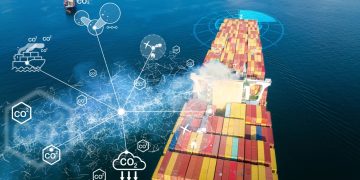Recently the 2,500-TEU capacity Safmarine Nuba called at the Matadi Gateway Terminal (MGT), opened new opportunities to new shipping system benefits for the Democratic Republic of the Congo (DRC). The call took place at the end of January.
The call marked the first call by a gearless containership and the first by a vessel with a capacity as high as 2,500 TEUs. The deployment of a vessel of this size can unlock economies of scale, and provide cost-efficient means of serving the capital city of Kinshasa.
[smlsubform prepend=”GET THE SAFETY4SEA IN YOUR INBOX!” showname=false emailtxt=”” emailholder=”Enter your email address” showsubmit=true submittxt=”Submit” jsthanks=false thankyou=”Thank you for subscribing to our mailing list”]
The transit along the Congo River is also time competitive, as it takes only eight hours from the Banana Roads, at the head of the Congo River, upstream to Matadi, compared to about five hours by road when optimum conditions are available.
Tim Van Campen, MGT director general, commented:
The MGT is built to handle vessels of up to WAFMAX dimensions and as such the Safmarine Nuba was straightforward to berth and work. We see this as a step on the road to handling even bigger vessels as demand builds, eventually up to WAFMAX dimensions from direct calls
MGT and Congo have developed a two-step plan to achieve strategic dredging in the Congo River up to a draught of 12.5 meters, and open the door to Panamax class vessel calls. A third phase will follow to enable access for the slightly larger WAFMAX vessels, which will need a draught of 14 meters.
For his part, Hans-Ole Madsen, ICTSI Senior Vice President and head of EMEA, noted that the terminal is having a positive impact right along the supply chain, and is delivering practical benefits to cargo owners.

































































